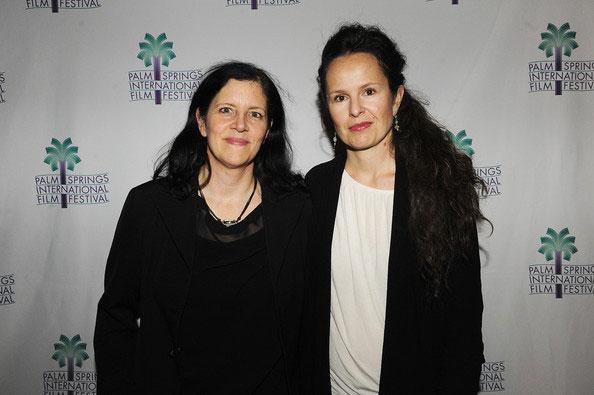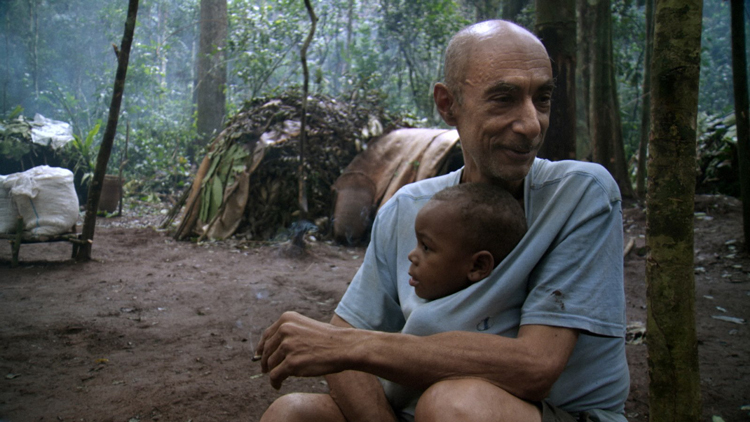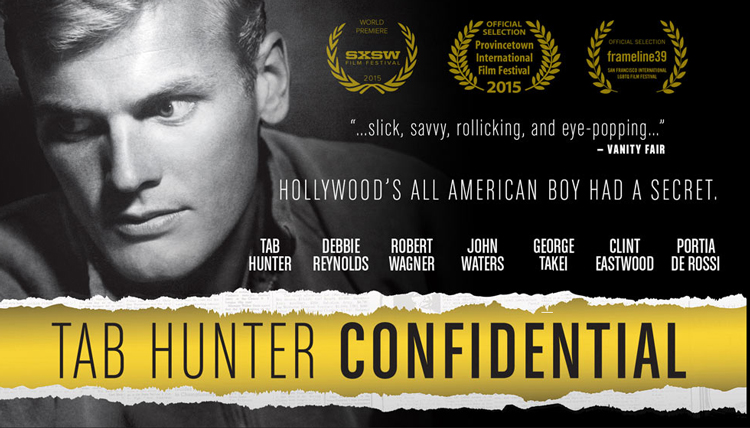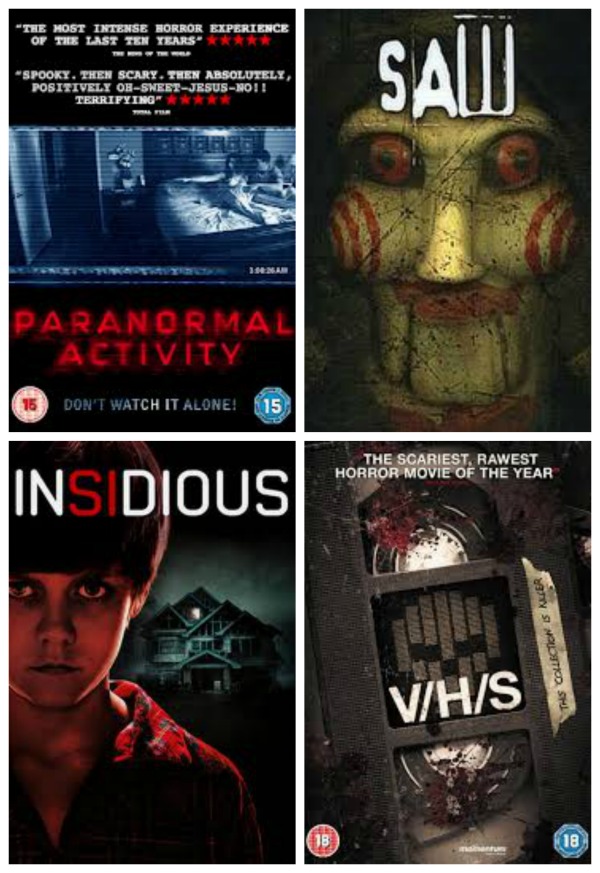
Battle for festival supremacy-TIFF vs Sundance
A knockout victory
The Toronto International Film Festival (TIFF) is just behind us and films submitted for Sundance are a month away from their acceptance call. While the difference between Toronto/Sundance and SXSW/Tribeca is pretty clear, what separates Toronto from Sundance might surprise you.
I looked at the data from the last two year’s of each festival and came up with one big conclusion. Sundance is the bigger festival for North American distribution on just about every measurable level I could come up with.
How could this be? Toronto is the more mainstream fest, right? Not so much.
Let’s start with some comparative info that would clearly skew things in Toronto’s favor:
-62.5% of films from TIFF 2013 have US distribution
-81.3% of films from SUNDANCE 2014 have US distribution (and remember this was accomplished in 9 months compared to TIFF’s 13 months)
But what about the box office performance?
Sundance has a higher percentage of films that grossed over $1 Million, $500,000, and $100,000 than TIFF. This is including non world premiere films which would give TIFF an advantage.
But what about the size of the deals? Isn’t TIFF where the big money is? Hardly
11 films from TIFF 2014 generated 7 figure deals, 11 films from TIFF 2013 did the same. The difference is TIFF screens 2.5x as many films. Even eliminating the # of films with US distribution before TIFF started and cutting out foreign language films, producers were still twice as likely to get a seven figure deal at Sundance.
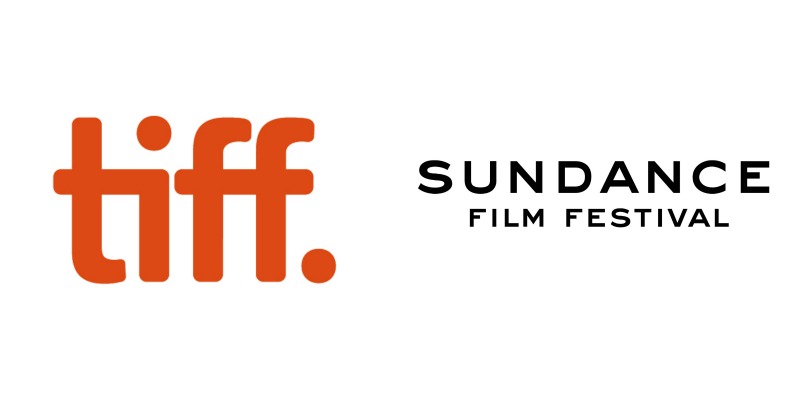
The Documentary King
TIFF is a much more diverse slate, but sorely lacking in docs. Roughly 1/3 of Sundance films are documentaries, while only about 1/10 of TIFF films are. Even then, docs were more likely to get distribution out of Sundance than TIFF and by a very wide margin. 90% vs 52%. The majority of docs that made the Oscar shortlist came from Sundance, as have a majority of nominees in the last five years.
Foreign Language Problem
In contrast to their #1 status as a place to launch documentaries, Sundance’s World Cinema lineup is far from a sure bet.
While only 41% of Sundance 2014 World Dramatic films have US distribution, that percentage is still higher than foreign language films that screened at TIFF. The % is higher even if we include all foreign language films and not just world or international premieres at TIFF. So even in Sundance’s weakest area your odds are still better than at TIFF.
That all noted, TIFF receives some high profile foreign language films that will ultimately generate bigger deals and make a dent in the US box office, but those are few and far between in an already very unprofitable arena.
So What Does a TIFF Screening Mean?
TIFF does two things that Sundance does not. It functions as a worldwide market and it is a frequent must for awards buzz films.
Sundance films do better on a domestic level. TIFF films are more likely to generate some form of worldwide interest and the majority of major worldwide players are in attendance.
Sundance has an international presence, but nothing on the same level of going into the Hyatt and taking the United Nations tour of film booths.
Sundance also doesn’t take studio films, which TIFF does. I would argue this is part of the problem TIFF films face. The competition for attention is so much higher with studio films in the mix that many simply get lost in the shuffle.
The DIY Mindset
In the age of DIY options at very low cost, one has to wonder why so many films at TIFF didn’t take advantage of Vimeo’s $10k offer in 2013. In fact, 55 world premieres still lack US distribution, which means with 100% certainty they turned down $10k to chase a pipe dream of success.The worldwide sales agent aspect at TIFF makes it a lot harder to discuss DIY options, but things are slowly starting to change.
This year was the first time multiple filmmakers were willing to openly discuss DIY options for release with me during the fest.
Sundance has their Artist Services program and some very notable DIY success stories (Detropia, Indie Game: The Movie, Upstream Color etc). But the biggest difference is Sundance is early in the year. There are tons of festivals left with which to build exposure going into release.
While it is almost always advisable to hit the festival circuit running, if one didn’t do that at Sundance, it’s easier to rev up the process than at TIFF when the year is nearly finished. If you don’t pursue additional festival screenings right away, your film would play TIFF and not screen anywhere until the following year. Remember there aren’t a lot of festivals in November/December. By that point people have moved onto Sundance and don’t even remember what they saw at TIFF.
The Take Away
Don’t buy into the hype about a festival without carefully looking at the info. While many Oscar winners have come from TIFF, the stats don’t lie. For domestic success, your odds are better with Sundance. This doesn’t make TIFF a bad festival, it’s easily the 2nd best launch pad in North America, but it’s important to know that your film is more likely to get a distribution deal out of Tribeca than TIFF if you have a documentary.
The consensus from this year’s TIFF was that there weren’t too many hidden gems, but with 288 features would any of us even know? At a certain point size is a liability and I think that TIFF needs to shrink its slate or get more creative when it comes to highlighting world premieres without big names.
Reminder: EVOLUTION OF A CRIMINAL & THE CIRCLE
The Spike Lee executive produced Evolution of a Criminal opens in NYC Friday October 10th at IFC Center. They are also crowdfunding to support their nationwide theatrical release. https://www.kickstarter.com/projects/948417025/evolution-of-a-criminal-theatrical-release
In partnership with Wolfe Releasing, TFC Direct will be theatrically releasing Switzerland’s Oscar entry, The Circle. It opens November 21st in NYC and will be expanding through beginning of 2015.
Bryan Glick October 9th, 2014
Posted In: Distribution, DIY, Film Festivals, Publicity
Tags: Bryan Glick, documentaries, film distribution, Film Festivals, film sales, international films, Sundance Film Festival, The Film Collaborative, Toronto International Film Festival
Managing the self-financed theatrical release of Born to Fly
The Film Collaborative is working with a number of filmmakers who have decided to handle their own theatrical tours. Our colleague in charge of managing these theatrical tours is Bryan Glick and he shares the reasoning behind the cities and theaters chosen for the upcoming release of Born to Fly: Elizabeth Streb vs Gravity opening September 10 in New York City.
Anything that is too safe is not action!
-Elizabeth Streb
Born To Fly: Elizabeth Streb vs. Gravity is the latest DIY Hybrid-theatrical that The Film Collaborative is managing. I was lucky enough to see a rough cut just before SXSW and was truly blown away by how visual the film is. It demands to be seen on the big screen in order to fully appreciate the daring exploits of these athletic dancers.
Film Forum clearly agreed and by the time SXSW arrived, venerable New York cinema had already secured a week long engagement for “BTF” in September. With that glowing endorsement in place, we moved forward to draft a self financed Theatrical plan for the film which was made up of festival screenings and cinemas, both of which will provide revenue opportunities.
On the festival front, the film has since played at Full Frame, Sheffield, and Frameline LGBT along with 20+ others. The festival circuit serves a dual purpose for the film 1) to boost interest in the theatrical and secure further bookings in that space and 2) the festival screening fees may be much more than what the film would take in from a theatrical run in some cities.

“Gauntlet” Photo by Tom Caravaglia
Elizabeth Streb and her dance company are based in Brooklyn, New York so it was clear NYC is where the film should start its release. We fully anticipate NYC to be the biggest theatrical total of any of the markets. While that’s not unique, our grosses are likely to be abnormally tilted towards the NYC numbers. We saw a similar phenomenon with Ira Sachs’ “Keep the Lights On,” (the film is set in Manhattan) which played for almost two months in NYC.
Having a several month head start, the filmmakers, TFC, and Streb reached out to a number of potential groups to take advantage of the $7.50 group discount at Film Forum. We now have over $5,000 in pre-sales for our engagement and multiple sold out screenings. In addition, we are “eventizing” these screenings by scheduling several Q&A’s with the filmmaker and central subject of the film. This strategy is being duplicated in LA and San Francisco where we open two weeks later. We are having a special free preview at The Hammer Museum in LA to boost word of mouth in Los Angeles ahead of a run at Laemmle’s NoHo where Elizabeth and the film’s director, Catherine Gund, will both be present for opening weekend. We also will have them Skype in for the San Francisco screenings during opening weekend at Vogue Theatre. In knowing our target audience, we chose this theater in Presidio Heights because it serves an older, well educated clientele with interest in the arts. The Vogue regularly shows special dance screenings from Ballet/Modern companies and comes at a much lower cost point than Landmark Theatres with none of the hassle.
In an effort to keep costs down and maximize revenue, we are relying on the strength of Inclusive PR to secure prominent press coverage and reviews; an in-house email database with 1000’s of contacts collected over the years; grassroots outreach to dance companies, arts organizations, senior organizations and the LGBT community; and social media. We are also avoiding chains like Landmark that require specially created DCP’s and bigger traditional print ad buys which, for a niche film of this nature, would not be targeted enough and enable the film to recoup the costs let alone see profit.
The theatrical rollout is intentionally slow, only adding 1-3 cities each week so as not to get overwhelmed by all of the support each city would need. We have a lean team and a lean budget so we are allocating a few hundred dollars in social media and digital ads and large markets may get highly targeted print ads. So far, we’ve saved thousands of dollars by not four walling at a single venue! As such, the release will cost comfortably less than $50k.
Elizabeth Streb is well known in the dance world, but it still takes time to build up word of mouth for this film. We are relying on a mix of lesbian, dance, and senior organizations for support. As with every specialty release, it is important to know your niche(s). While TFC usually avoids print ads when possible, in this case a limited amount make sense. Our audience skews older, educated and is more likely to read the newspaper. Our social media is geared specifically towards Facebook which, while falling out of fashion with millennials, is still prime territory for the 45+ group. We are sending regular email updates and blasts while consciously monitoring our paid media budget.
Added to these screenings, we will also incorporate theatrical on demand and have the film available on TUGG. That tool may be used by fans to bring the film to some smaller towns where Elizabeth Streb and her dancers have toured to in the past.
We anticipate somewhere around 20 markets for the theatrical in addition to festival screenings and a separate Canadian theatrical. The goal is to build a presence for the film that will feed the VOD/Digital/TV releases while minimizing the potential for loss that is often the hallmark of an indie film theatrical release. No easy task in the theatrical industry, but a challenge we happily embrace.
Bryan Glick September 2nd, 2014
Posted In: Distribution, DIY, Film Festivals, Theatrical
Tags: Born to Fly: Elizabeth Streb vs Gravity, Bryan Glick, Catherine Gund, Elizabeth Streb, Film Forum, Frameline, Full Frame, Hammer Museum, laemmle's noho, self distribution of indie film, self financed theatrical release, Sheffield DocFest, SXSW, The Film Collaborative, Tugg, Vogue Theater
All Stars of the Theatrical Self Release for Independent Films
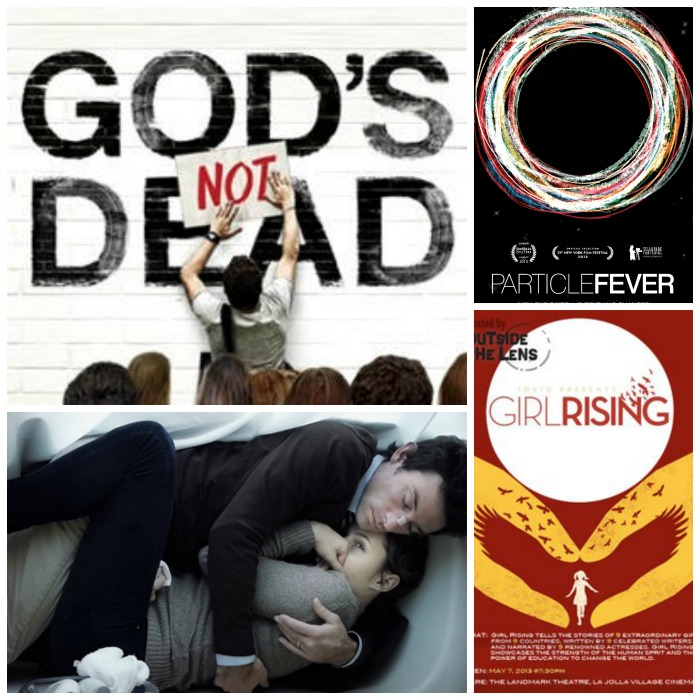
Handling self funded theatrical distribution for TFC clients, I find myself wondering why more filmmakers don’t consider the self releasing option from a long-term career standpoint and the potential upside that comes from receiving the bulk of the revenue from the release. I am continually intrigued, pleased and surprised by the success of many who do.
Here are pristine recent examples of self funded releasing. These films each found specific ways to tap into their audience and often opted to do something outside the norm. For the sake of transparency I only am listing films that are admittedly self released in their approach. I would argue Middle of Nowhere is in fact a self funded release as it is a solid example of building and controlling a filmmaker’s brand, but I didn’t include it in this list.
While Gathr have a number of films that have done very well using their demand a screening platform (such as Anonymous People which TFC advised on), no TOD (theatrical on demand) release was as monumentally successful as Girl Rising. The film was aided by many factors such as funding from the Paul G. Allen Family Foundation, partnerships with Intel, the United Nations and World Vision as well as a small army of political and grassroots influencers, technologists and publicists. The documentary featured Hollywood A-list narrators like Meryl Streep, Anne Hathaway, Alicia Keys and Selena Gomez.and reached a fever pitch of screenings via the Gathr platform in the Spring of 2013. The film was also picked up by CNN Films for broadcast.
Much of the self funded distribution space is about the value of name recognition. Louis CK has such a loyal audience that he can get away with only selling his Live stand up docs on his website that are DRM free and asking fans not to upload it for free online. The films do so well that he is making seven figures in profit and will keep distributing them this way. His level of sales success, of course, is not realistic for most indie filmmakers, but it shows the value of brand developed over time. If you build up a loyal base and treat them with respect, they will follow you and as a result you can cut out the middle man.
Detropia world premiered at Sundance, won the editing award and came from two Oscar nominated directors. But they found distributors were wary to take on the film and/or didn’t get what the directors were trying to do. After a successful Kickstarter campaign to raise funds to self distribute, the film went on to gross over $300k+ theatrically. The filmmakers made the wise choice to open the film in a suburb of Detroit instead of NYC and the film grossed over $20k from that single screen at Landmark Royal Oak, far more than they would have launched with in NYC. They embraced their target audience and much like Escanaba in Da Moonlight pushed very heavily to a hometown crowd.
Sound City world premiered at Sundance 2013 and decided to do a day and date release less than a month after premiere. No distributor would have agreed to that. Dave Grohl himself promoted the film heavily (again the value of a fan base will pay off) and the film launched as the #1 doc on iTunes and grossed over $400k theatrically. It’s the highest grossing release from service theatrical company Variance to date. While fellow music recording doc Muscle Shoals may have grossed more money at the box office, they have to split the revenue with the distributor, Magnolia. Sound City likely made quite a bit more money back into their pockets.
Particle Fever has grossed over $850k to become the highest grossing Abramorama service release. They creatively tapped into the science community and quickly and quietly bypassed other more high profile docs like “Life Itself”. Using support from a community with solid internet leverage meant a lower P&A and this film, just shy of a $1 Mil grosser, can easily be called a success on all cylinders. It also doesn’t hurt that it scored a 95% from critics on Rotten Tomatoes. The film is now available for paid streaming on their website powered by VHX.
I Am Divine had a self funded theatrical release handled by The Film Collaborative. The film grossed $82k on a $8,000 release budget. This was run just as the film was finishing its 200+ festival screenings tour around the world for which the filmmaker has made 10’s of thousands from screening fees. We let social media and the Divine brand do much of the work as the colorful character inspired many around the world and they were excited to see his life story on the big screen. The film spent multiple weeks as the #1 Doc on ITunes when Wolfe Releasing put it out this year. A rare film to be profitable in every viewing arena.
God’s Not Dead again shows the value of a niche demographic that can be reached with the help of deep online data analysis. Working with Freestyle Releasing to open on 780 screens nationwide, the religious right pandering film has theatrically outgrossed Wes Anderson’s “The Grand Budapest Hotel,” which at its widest played over 1400 screens. This technically makes it the highest domestic grossing indie release this year. It’s passed $62 million on only a $2 Million budget production budget. The production worked with Ash Greyson’s Ribbow Media to handle a sizable social media advertising campaign directed toward Duck Dynasty, Kevin Sorbo, Dean Cain and Shane Harper fans and limited TV advertising on the 700 Club, Up TV and Pandora radio. It was a highly coordinated gamble that paid off handsomely. Lionsgate picked up the rights to distribute the movie through VOD (video on demand), SVOD (subscription video on demand) Pay-Per-View and television across the U.S. this month.
Upstream Color was the long awaited follow up from indie auteur Shane Carruth. He vetted offers while planning months in advance for a self funded release that launched out of the film’s Sundance premiere. Carefully planned and executed to reduce costs, Carruth’s intention was to give the film just enough of a theatrical release to legitimize and raise awareness for the film before sending it out to the online platforms where it would find actual significant revenue. For a while the film continued to play theaters simultaneously with the digital sales option, a feat almost unheard of in the Spring of 2013, but becoming a much more accepted and savvy practice now. Though lacking star wattage and a less than commercial story approach, Upstream Color amassed $444k and while Carruth kept full control of the release. The film is now widely available digitally.
Some honorary mentions for great self financed releases go to The Anonymous People (second highest grossing Gathr release despite no fest exposure), Spark: A Burning Man Story (Over $77k on another TOD service called TUGG with surcharged Burning Man tickets, over six figures theatrical and digital), Kids for Cash (Launched at 4 theaters in PA and grossed six figures), and Under the Electric Sky (a TUGG release with six figures, but curiously controlled by a traditional distributor, Focus Features).
Of this list, a vast number of the TOD releases are for documentary, some with star names attached and all with some kind of cause or niche audience interest to tap into and they all clearly did tap into that. Also, funds were raised to accomplish a theatrical release, hence the name self financed release. This should indicate to you that making a film meant for self funded release you NEED to have an identifiable brand, a social cause or a niche audience interest base to tap into. Think very carefully about how that film will be released successfully because these are the same considerations a distributor will look for when evaluating the release of a film.
Bryan Glick August 7th, 2014
Posted In: case studies, Distribution, DIY, Theatrical
Tags: Bryan Glick, Detropia, DIY film distribution, Gathr, Girl Rising, God's Not Dead, I am Divine, independent film, Kids for Cash, Particle Fever, Sound City, Spark: A Burning Man Story, The Anonymous People, The Film Collaborative, theatrical self release, Theatrical service company, Tugg, Under the Electric Sky, Upstream Color, Variance
Narrative film roundup from the Spring festivals
Ed note: TFC colleague Bryan Glick is taking a look at how officially selected films have performed in release since their premieres at the major Spring film festivals SXSW, Tribeca and Cannes 2013. In this second post, he covers the narrative films. His look at documentaries can be found HERE.
CANNES
There is no better worldwide platform launch than Cannes. For foreign language films, it is arguably the best place to solicit North American interest. 20 World Premieres (or 25% of selected films) from Cannes 2013 grossed over $100k and 10 of those grossed over $1 Million theatrically in North America. These films also frequently perform much better internationally. Four foreign language films managed over $1 Mil and 11 over $100k. No fest has such a strong record for non-English Language content. Additionally Nebraska, Inside Llewyn Davis, The Missing Picture, The Great Beauty, All is Lost, and Omar all found their way to Oscar Nominations. And another 9 films from the fest were official Oscar submissions from their country. Cannes has the perception of the ultimate endorsement. It is one of not even a handful of laurels that automatically adds value to a film.
However, less than 2/3 of world premieres got any sort of North American distribution. This is below the % from Sundance, SXSW, Tribeca and only slightly above the behemoth of TIFF. Naturally, the films performing at the top of the box office are primarily from those selected for main competition and are most likely to facilitate distribution deals.
Turning to this year’s festival, a little over 30 films currently have North American distribution. 1/3 of those are from Sony Picture Classics! They have a whopping 10 films. They went into the fest with competition award winners Mr. Turner (Best Actor) and Foxcatcher (Best Director) pre-attached. Prior to the fest they also snagged Coming Home and Red Army. On top of that, they added Wild Tales, Saint Laurent, Jimmy’s Hall, and Best Screenplay winner Leviathan from the main competition. In addition, they took the doc The Salt of the Earth.
Not far behind was IFC with 6 films. They arrived with competition titles Clouds of Sils Maria, and Two Days, One Night. They added to their impressive tally Bird People and The Blue Room from Un Certain Regard and wrapped it up with The Salvation from the midnight lineup.
Those two companies combined for ½ of all Cannes 2014 films with distribution in the US! They also indirectly highlight what was clearly missing from this year’s Cannes crop. No studio presence in any competitive sections. Warner Bros technically has Ryan Gosling’s directorial debut, but multiple reports suggest the distributor is trying to pawn it off to a smaller company and cut their losses.
A number of distributors though still had reason to be happy. Radius-TWC, TWC, Cohen Media Group, Magnolia. And A24 each have a pair of titles.
A24 took the critically panned, but star heavy The Captive and just opened The Rover last Friday to a US opening weekend gross of over $69K in 5 theaters. The film is performing much better in France, Australia and Belgium though.
TWC had opening night Grace of Monaco and The Disappearance of Eleanor Rigby which screened as two different films at TIFF and will be released as three different films in the Fall. The genre heavy and younger skewing Radius-TWC took two films from Critic’s Week, the American horror film It Follows and When Animals Dream.
Magnolia took the top two prize winners from Un Certain Regard Force Majeure and White God. Cohen Media Group continues their trend into foreign cinema with Timbuktu and In the Name of My Daughter (screened out of competition).
Other companies to acquire include Strand Releasing (Girlhood), Saban Films (The Homesman), Music Box Films (Gett: The Trial of Viviane Amsallem), WellGo USA (These Final Hours), and EOne (Map to the Stars)
Many of these films have very good prospects in North America and around the world.
TRIBECA
Admittedly, Tribeca is frequently a dump off site for Sundance narrative rejects. Multiple people have opined that the fest would do better to just focus on docs. The performance of last year’s narrative lineup shows that there is some life left for their non doc films, but not much.
The English Teacher which was pre-bought by Cinedigm was the only scripted fare at last year’s fest to pass $100k (which it barely accomplished). French specialty arm Distrib Films pushed Just a Sigh to just over $71k with only a few small venues left to play.
Lagging behind are Focus World/Screen Media’s day and date release of A Birder’s Guide to Everything ($48k), Strand Releasing’s Bicycling with Moliere ($49k) and Israeli genre fare Big Bad Wolves which managed $33k as a day and date with Magnolia.
What the fest proved to do last year though was highlight a number of films in their North American premiere. Berlin titles Broken Circle Breakdown, The Rocket and Reaching for the Moon all were met with some success. ‘Broken’ secured an Oscar Nomination and grossed $154k through Tribeca Films. Kino Lorber got the Australian made, but Laos set Rocket to manage $54k and Wolfe Releasing saw $45k for Reaching on top of massive festival exposure. The Film Collaborative handled grassroots marketing and fests on the latter.
Nothing else grossed over $25k in theatrical relase, though many films performed well digitally in the hands of IFC, Anchor Bay, Oscilloscope, Vertical Entertainment, Tribeca Films, XLRator Media, Samuel Goldwyn, and Dark Sky Films. Notably, The Machine is currently in the top 10 on ITunes. In all, over 70% of the narrative films that premiered at Tribeca have some form of domestic distribution confirmed. Only Sundance had a higher rate of distribution. But, American films from Tribeca rarely played well internationally.
Turning to Tribeca 2014 the big deals were once again for docs, but there some notable narrative acquisitions. About 20% of films available when the fest was announced have since been acquired
IFC took Extraterrestrial, 5 to 7, and Match. Likely all three will be VOD focused. Magnolia took Life Partners, Film Movement opted for Human Capital, and Zeitgeist has Zero Motivation.
Additionally About Alex went to Screen Media, Summer of Blood sold to MPI, and The Canal will be working with The Orchard.
SXSW
Where SXSW has an advantage over Tribeca is that there is a clear sense of programming and demographics. Tribeca is often the back up to Sundance, while SXSW is the place for younger, edgier, hipper fare. Naturally, many of the narrative deals from SXSW this year were for genre films.
Magnet took Honeymoon which is the rare film to premiere at SXSW and screen at Tribeca. Lionsgate bought Exists, Cinedigm peeked into Open Windows, and Radius-TWC invested in Creep. IFC Midnight went for Home and the time traveling teen sexy comedy Premature and mainstay label IFC bought Kelly and Cal. XLRator bought Housebound and The Mule and Oscilloscope took Buzzard.
Radius-TWC has already released this year’s 13 Sins and Magnet released Stage Fright.Both were ultra VOD releases with so-so digital performance and middling box office.
Additionally, the fest was the world premiere choice for Chef which has become the 3rd highest grossing indie this year so far and Veronica Mars is the highest grossing day and date release so far this year.
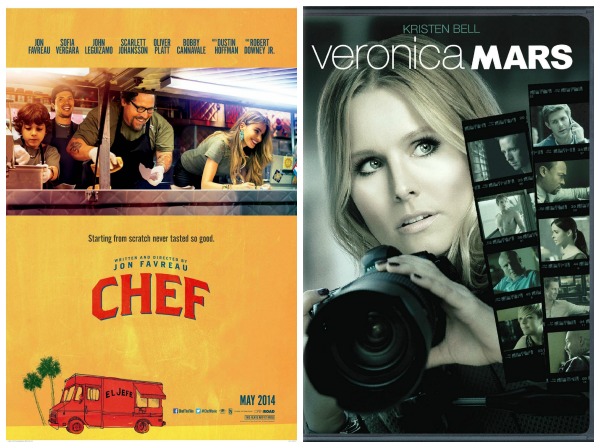
Last year’s fest saw the massive breakout Short Term 12 gross over $1 Mil in the hands of Cinedigm and dominate critic’s lists. Magnolia did over $343k with Joe Swanberg’s Drinking Buddies. The latter was day and date. Both films outgrossed all of the Tribeca Premieres from 2013.
Also performing somewhat well was Drafthouse Films Cheap Thrills which did $59K at the box office and Variance’s service release of The Retrieval which will pass $50k this week. Variance also did $62k with John Sayle’s Go For Sister which had its North American premiere at the fest.
A large number of films from the fests last year went digital only, had small theatricals, and/or set up self financed releases. Tribeca has started to take notice and this year a number of films premiering there opted for this route.
Cannes continues to be the one major festival holdout where films premiere and wait it out for distribution offers.
Bryan Glick June 19th, 2014
Posted In: Digital Distribution, Distribution, Film Festivals, Theatrical
Tags: Bryan Glick, Festival de Cannes, festival roundup, Film Festivals, independent film, narrative films, SXSW, The Film Collaborative, Tribeca
Documentary roundup from the Spring film festivals
Ed note: TFC colleague Bryan Glick will spend these 2 weeks taking a look at how officially selected films have performed in release since their premieres at the major Spring film festivals SXSW, Tribeca and Cannes 2013. In this first post, he cover the documentaries.

TRIBECA IS RULED BY DOCUMENTARIES
The three highest grossing films and 7 of the top 10 grossing films from last year’s Tribeca were documentaries. As you follow the list of films, it should become clear how important Tribeca is to the doc world and how little of a presence Cannes has in documentaries.
IFC/Sundance Selects released the bio-doc Elaine Stritch: Shoot Me which has grossed over $305k in North America. That tops all SXSW docs from last year. IFC Also shined on a light on the cute kids of Dancing in Jaffa, which, despite being a day and date film, has grossed $136k domestically and $297k worldwide at the box office. Additionally, IFC is releasing TFC film Gore Vidal: The United States of Amnesia in theaters right now. In only 10 days in NYC, it has grossed $33k and is likely to be one of the top five films from last year’s batch when it’s all said and done. TFC handled fests for the film placing it in 50+, a healthy reminder that festivals only help your release (and an added reason to use a company like TFC to maximize fest exposure and revenue).
Closing night film Mistaken for Strangers is the only other doc from Tribeca to pass the $100k mark. It had a mix of week long and special engagements via Abramorama in addition to instantly going to the top of ITunes. Never underestimate the power of a music documentary to find a strong audience.
Zeitgeist saw $64k with the all archival footage doc Let the Fire Burn and right behind it Kino Lorber’s release of The Trials of Muhammad Ali topped out at $59k in a maximum of only 10 theaters, but a long run of 19 weeks. Big Men has grossed $42k in its service theatrical release with Abramorama which, given their advertising buys, has got to be below expectations. Oscilloscope has done well digitally with Teenage and slowly built up to $40k with another couple of venues left in the release.
Aatsinki:The Story of Arctic Cowboys, Flex is Kings, and Lenny Cooke all had small DIY releases. The Motivation opted for a release through GoDigital and multi award winner Oxyana did an exclusive with Vimeo.
Bridegroom is the rare doc to get into Redbox, but the film’s largest audience was on OWN. Showtime took Richard Pryor: Omit the Logic. HBO trumped all networks with Gasland Part II, Inside Out:The People’s Art Project and the acquisitions of Herblock: The Black and the White and I Got Something’ To Tell You.
Circling back to this year, ½ of the acquisitions from April’s Tribeca Film Festival were documentaries including Keep on Keepin’ On which Radius-TWC bought for over $1,000,0000! Radius-TWC also snagged the lego doc Beyond the Brick while Magnolia was entranced by Ballet 422. Another highbrow doc, Dior and I, sold to EOne and opening night hip hop Nas doc Time Is Illmatic went to Tribeca Films. Morgan Spurlock Presents (A new partnership with Spurlock, Virgil Films and Abramorama) will release A Brony Tale this summer and just after the fest, Kevin Spacey released the doc Now in the Wings On a World Stage off of his personal site powered by VHX and in a few theaters. It’s now passed $50k at the box office.
CANNES CANT TALK DOC!
While Cannes may be unrivaled as a launchpad for narrative films, it continues to largely ignore documentaries. Of the four (that’s right…only 4) documentaries that world premiered at Cannes, none could be considered breakout hits.
Jodorowsky’s Dune, an admittedly somewhat fringe film to begin with, got the maximum play humanly possible in the hands of Sony Picture Classics. It’s still in theaters and has racked up just under $600,000 domestically. That is more than any documentary out of last year’s SXSW, LAFF or Tribeca.
While scoring a best foreign language film Oscar nomination, French/Cambodian doc The Missing Picture only limped over $50k at the hands of Strand Releasing in its domestic release. It’s international box office revenue doesn’t bring the film’s total to even $100k. Its performance is well below the performance of the other four foreign nominees (or the 5 Best Doc nominees for that matter) despite an average Rotten Tomatoes score of 99%.
With an overwhelming 220 minute run time, The Last of the Unjust maxed out at just over $40k theatrically which is on the low end for the holocaust subject matter, but given the massive length should be considered somewhat impressive. Internationally though it did even worse than The Missing Picture. The one other doc, James Tobak’s Seduced and Abandoned premiered on HBO.
SXSW 2014
Which lands us back at this year’s SXSW 2014. The festival saw a little movement in the doc acquisitions department with Gaiam TV buying TFC repped doc The Immortalists and Netflix nabbing exclusive rights to Print the Legend. Oscilloscope took advantage of BFI marketing matching funds and acquired Pulp: A Film About Life, Death and Supermarkets which will also screen at the upcoming Sheffield DocFest.
TFC was quite active at the festival this year. We arrived with two docs for festival rights (The Dog and The Immortalists) and have since added Song From the Forest and Born To Fly for festival distribution. Born to Fly has already been placed on the programs at Full Frame, SIFF, Sheffield, and Frameline and we will release it theatrically in a hybrid-DIY release. It launches September 10th in NYC at Film Forum and then comes to Los Angeles September 26 before expanding throughout the fall. Programmers may contact us directly about theatrical bookings of this film or message Jeffrey Winter about festival engagements for any of our 4 SXSW Docs.
Bryan Glick June 4th, 2014
Posted In: Distribution, Film Festivals, Uncategorized
Tags: Best festivals for documentaries, Bryan Glick, Cannes, documentaries, independent films, SXSW, The Film Collaborative, Tribeca
A Divine independent film release
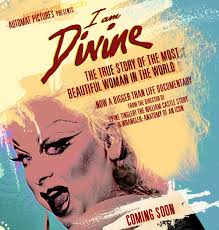
Sheri Candler April 3rd, 2014
Posted In: Digital Distribution, Distribution, Facebook, Film Festivals, iTunes, Theatrical
Tags: BFI Lesbian and Gay Film Festival, Bloor Cinema, Bryan Glick, Cinema Village, client, documentary, Downtown Independent, Film Festivals, I am Divine, Jeffrey Schwarz, Jeffrey Winter, membership, Roxy Theater, screening fees, Sheri Candler, SXSW, testimonial, TFC, The Film Collaborative, Wolfe Releasing
Distribution roundup from SXSW 2013
HELLO SXSW! It’s hard to believe that it’s been a whole year since SXSW 2013. The film festival (and all the other things that happen) has consistently been on the cutting edge of distribution options. It is truly a one of a kind festival for a number of reasons and while they won’t pay for filmmaker travel, they do provide huge opportunity for the savvy filmmaker.
With 125+ films and the literally hundreds of panels, it can be daunting trying to get the attention of eyeballs. That said, over 2/3 of the films that world premiered here last year have secured some form of domestic distribution (on par with Tribeca and second only to Sundance).
The Film Collaborative world premiered I Am Divine at the festival last year and our release strategy is a prime example of how the fest can be a launching pad. The film went on to play over 200 festivals in less than a year (more than any other film in the world) racking up screening fee revenue. TFC also managed its theatrical release starting last October. The entire operating budget for the theatrical release was less than $10k and the film has grossed over $80,000 theatrically to date. As impressive as that is, the festival revenue surpassed the theatrical total. Meanwhile, despite never paying for a single print ad, we just passed our 50th theatrical engagement. The film has almost 40,000 Facebook Fans and will be released on DVD/Digital in April through Wolfe Releasing, and a TV premiere is scheduled for October.
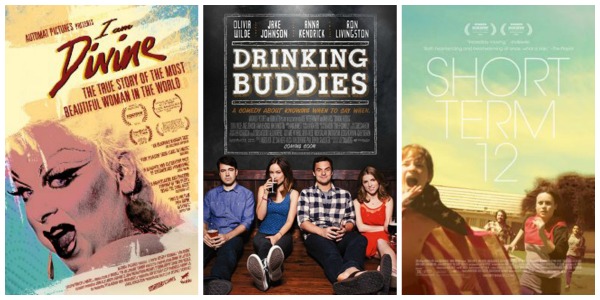
SXSW produced two clear narrative breakouts last year, neither from a first time filmmaker. Joe Swanberg’s Drinking Buddies was a day and date release and managed to gross $300k+, his highest grossing film to date. It has chartered quite well on iTunes and other digital platforms and is likely quite profitable for Magnolia (hence why they acquired Swanberg’s follow up out of Sundance this year).
The other narrative breakout was the critically acclaimed Short Term 12. Sundance’s loss was SXSW’s gain and the film grossed over $1 million at the US Box Office, won multiple audience and jury awards and is the highest grossing film ever for Cinedigm. The film has been in theaters non stop for over ½ a year!
12 O’Clock Boys was released day and date and is Oscilloscope’s highest grossing release in over a year. It also topped iTunes and, to date, the film has managed over $80k in revenue. In fact, the day and date strategy has not appeared to hurt other top performing SXSW Docs.
Magnolia grossed $138k with Good ‘Ol Freda Also passing the $100k mark was Spark: A Burning Man Story. The film managed over $120k with a self financed theatrical handled by Paladin. What stood out wasn’t the total, but the fact that 70%+ came from Tugg Screenings! FilmBuff handled the digital rights where the doc performed equally as well. Meanwhile IFC’s The Punk Singer was a more standard release, but still a solid success passing the $120k gross mark.
Fall and Winter, Euphonia and Some Girls all opted for digital releases via the newly established Vimeo on Demand service. This year, Vimeo is investing $10,000,000 into its service and offering $10,000 minimum guarantees in exchange for an exclusive digital distribution window to any film that has premiered at one of the 20 leading global film festivals throughout 2014. Filmmakers also may apply for marketing support. The huge thing though is that the filmmaker gets to keep 90% of the revenue, which is far better than any other notable digital platform.
Also popular amongst the filmmakers was FilmBuff. No fewer than eight world premieres were distributed digitally by them. A few of those films also had small DIY theatrical releases.
It should be noted that DIY releases cost money which might be a problem for those who did not budget ahead of time for such a release. However, cash strapped filmmakers have raised DIY funds via Kickstarter to aid in such releases. TFC helped Big Joy: The Adventures of James Broughton raise over $50k. Loves Her Gun, This is Where We Live, and Love and Air Sex (AKA The Bounceback ) all raised distribution funds via crowdfunding.
Netflix took The Short Game as their first documentary acquisition and the film had a modest theatrical run via The Samuel Goldwyn Company. Pantelion passed $50k with Hours which has been a top digital performer following the death of its star, Paul Walker. First Run Features is approaching $40k with Maidentrip and companies like IFC, Magnolia, Oscilloscope, Breaking Glass, FilmBuff, and Variance all took multiple films.
On the TV side, SXSW films have premiered on Al Jazeera, CNN, Showtime, PBS, and VH1. Many of those films had some form of theatrical too. Documentaries continue to be the bulk of the festival highlights though the top two grossing films were narratives. The festival is second only to Sundance for world premiering a doc.
As we look to what the 2014 crop will offer, there are already some game changing situations. BFI is repeating their marketing match offer of up to $41k for any distributor who acquires one of their five UK based SXSW premiere films for distribution. As pointed out earlier, Vimeo’s offer extends beyond SXSW to 19 other upcoming festivals. I encourage you to keep an open mind and craft your film strategies now! The $10K MG that Vimeo offers for such a short exclusive digital window (plus you get to keep 90% of any revenue after the MG is recouped!) is better than many advance offers made by lower profile distributors. You can always pull your title off after the MG is recouped and seek more traditional distribution routes as Cinemanovels did out of Toronto last year.
SXSW is a great place to showcase your film, but without a formal market and with all the craziness that surrounds the festival from the interactive and music sides, it is unlikely that seven figure deals will pop up like they do at Sundance. Despite this, deals are still made, some choose to go into the DIY space and a few (like our release of I Am Divine) succeed in both arenas. The possibilities are endless.
Bryan Glick March 10th, 2014
Posted In: Distribution, Film Festivals, iTunes, Netflix, Theatrical, Uncategorized, Vimeo
Tags: 12 O'Clock Boys, BFI, Bryan Glick, crowdfunding, DIY release, Drinking Buddies, I am Divine, Short Term 12, SXSW, The Film Collaborative, Vimeo
Sundance wrap up-Why give up revenue?
Sundance has come and gone and already Berlinale is a week away and SXSW announced the bulk of their slate today! We’ve now had a few days to reflect on the chaos that is arguably America’s most important film festival for indie film and here’s what we think.
Last year’s fest included a number of smaller foreign doc deals early on which is sorely lacking from this year. Only three docs have sold so far though all were decent sized deals and for films in the US Doc section. Interestingly, none of them won awards, but a number of other docs had TV deals arranged before the festival.
6 of the 16 US Dramatic films and 2 of the NEXT films sold. Sony/SPC, A24, Lionsgate/Roadside, Radius-TWC, Fox Searchlight, IFC, Magnolia all snapped up multiple films. However, previous players absent thus far are Anchor Bay, The Weinstein Company, CBS Films, Relativity Media, Sundance Selects, and Magnet. New distribution companies like Amplify did not make a single Sundance Deal nor did formally expanded ones such as Gravitas Ventures. This is probably the most alarming thing as every year a new distributor typically makes a big push for a film right out of the festival.
Before I get to the list of sales deals, I would like to talk about what I saw as a HUGE mistake! Consistently while attending documentary screenings at the festival, the filmmakers would say during the Q&A that they already had a team in place to arrange for special screenings or planning a self financed distribution scenario. NOT ONCE did this come up with the narrative filmmakers! One of the things TFC does is handle festival distribution for films, and most especially our service is applicable for films that premiered at a world class festival like Sundance. It is incredibly foolish not to capitalize on the publicity received at a world class festival by not planning for at least further festival screening revenue that will come right away. Should your film be in the lucky position of receiving a seven figure deal upfront, you might be able to afford to pull it from the festival circuit and forego further revenue, but with very FEW receiving those offers, why not plan for scooping up that immediate revenue potential?
I am not saying you have to go with TFC for festival distribution (though even traditional distributors turn to us to handle their films on the festival circuit and they take their cut of the screening fees), but I am saying you should have some sort of team in place to take advantage of those opportunities right away. By the time SXSW is finished in March, your film could already have booked $5k in festival screening fees on the circuit. Blood Brother had a dozen festivals under its belt by that point last year and many of the films at this year’s festival could do the same. Why aren’t they?

Now…on to the deals.
DOMESTIC/NORTH AMERICAN
Dead Snow Red vs. Dead: Well Go USA picked up US rights. The film will be released in an all English version.
Love is Strange: Sony Picture Classics (SPC) snagged Ira Sach’s follow up to Keep the Lights On
The One I Love: Radius-TWC paid about $2 Mil
Fed Up: Radius-TWC paid under $2 Mil for worldwide rights. This is bigger than what any documentary sold for at last year’s Sundance.
The Babadook; IFC Midnight
Cold in July: IFC took North American rights for $2 Mil
God’s Pocket: IFC has US rights
Calvary: Fox Searchlight signed on for the US and a few other territories for $2.5 mil
Obvious Child: A24 signed for low 7 figures for North America
I Origins: Fox Searchlight took worldwide rights for $3mil to Mike Cahill’s follow up for the splendid and under appreciated Another Earth
The Skeleton Twins: Lionsgate/Roadside Attractions/SPW joined together for $3.5 mil
Land Ho!: SPC took worldwide rights to the film that should travel well in European territories.
Frank: Magnolia saw through the fake head and bought it for North America for low 7 figures
Life After Beth: A24/DirectTV joined up for $3.5 Mil for US rights
Cooties: Lionsgate will spread the infection throughout North America.
Whiplash: SPC felt the beat for just under $3 Mil and Sony Worldwide has most international territories
Wish I was Here: the newly rebooted Focus Features took for $2.75 Mil (Film was partially financed on Kickstarter)
Laggies: A24 acquired domestic rights for roughly $2 Mil
Cesar’s Last Fast: Participant Media/Univision sold TV rights for Mid 6 figures
Dinosaur 13: Lionsgate/CNN went in for about $1 Mil
Happy Christmas: Magnolia/Paramount couldn’t say no to Swanberg. Magnolia also distributed his film Drinking Buddies.
PRE BUYS
Mitt: Netflix will release it in a week
Wetlands: Strand
The Raid 2: SPC
Love Child: HBO
Private Violence: HBO
The Case Against 8: HBO
Captivated: The Trials of Pamela Smart: HBO
Ivory Tower: CNN Films
Life Itself: CNN Films
Remembering the Artist: HBO
The Trip to Italy: IFC
The Signal: Focus
FOREIGN
Love is Strange: Pretty Pictures made a six figure deal for French distribution
The Green Prince: Curzon and Madman Entertainment brokered for UK, Australia, and New Zealand
Bryan Glick January 30th, 2014
Posted In: Distribution, Film Festivals, International Sales
Tags: Bryan Glick, festival distribution, film distribution, film sales, independent film, self financed distribution, Sundance wrap up, The Film Collaborative
Want to launch a horror film franchise? Better get onto the festival circuit.
We’ve all heard the stories of the little independent horror films that could; seemingly plucked from nowhere and went on to be mega hits.
Paranormal Activity, a $15,000 film launched at Slamdance 2008, was bought for about $350,000 and became the highest grossing film in the history of the festival. Though it was originally acquired with remake rights in mind, it ended up spawning four subsequent installments.
Sundance 2004 served as the launchpad for Saw (production budget around $1mil) which, like Paranormal Activity, was never supposed to go to movie theaters; it was originally going to go direct to DVD. It spawned 6 sequels. Another Sundance premiere, The Blair Witch Project, was shot for $60,000 and made over $140 Million in theaters.
Insidious was made for $1.5 mil, premiered at the 2010 Toronto International Film Festival and grossed over $90 Mil worldwide. Other films to launch at TIFF include Hostel and Cabin Fever.
Yes, these films are the exceptions to the rule. The rule that says box office success is a result of higher production spends and star names. Such is the potential of the horror genre. It has one of the most loyal audiences who, to a certain degree, ignore critics and don’t care too much about star cast. The catch is the traditional indie release model does not work to get these films out to market.
It is almost impossible for a horror indie to do the slow expansion route. This is why most films either release day/date, go direct to DVD or open wide and place all their marbles on opening weekend. Almost all horror films drop off over 50% after their first weekend. Often dropping even 60 or 70%. Even a film with critical appeal like You’re Next only received middling reactions from the larger fan boy audience and will end its theatrical with less than $20 Million. Notably, it still out-performed all but one TIFF acquisition from last year’s festival.
What makes the films I listed above unique is that they either opened in limited release and immediately garnered major interest (Paranormal Activity) or showed immense staying power per the genre (Insidious).
The commercial potential of horror compared to other arthouse films cannot be ignored. Almost no one I know would consider any of those films ‘arthouse,’ but that’s exactly what they are. They are some of the most commercially successful independent films ever released. This year, all but one of the midnight madness films from TIFF has a US distributor attached and last year’s batch all found distribution deals, making it the only section from the festival to secure domestic distribution for all of its slate.
Even the films that don’t necessarily draw massive box office are usually incredibly successful. Sundance films like The Pact and V/H/S were never about theatrical receipts. Both were profitable via the advance received for their domestic distribution deal alone and both were profitable for the distributor (mainly via home video and foreign sales) hence why they each got sequels. Horror is arguably the only genre I know where a film could be bought for just shy of seven figures (The Pact), gross less than $10k theatrically in the US and still be considered a massive success. Distributors like Anchor Bay (who sometimes finances too), IFC Midnight, and Magnet specialize in this kind of release model and continue to thrive. It’s incredibly rare for any of them to push the theatrical and almost all of their releases are available on demand upwards of 2 months before they even pop up on a screen.
There is also a clear set of time windows when these films do well. You will not see horror films popping up in theaters in the US during November or December and with good reason. Who can compete with the Christmas releases? Many distributors treat horror as filler title for January/February and it has worked well for films like Hostel. Insidious and The Pact were both summer counter programming. When The Sixth Sense set a then record for releasing at the end of summer, it seems to have set a precedent to debut horror in late summer.
I want to be clear though all is not a pot of gold when it comes to the genre. Please contrast this post with the prior blog entry from my colleague Sheri Candler. EVERYTHING there is absolutely true. I received more solicitations for generic horror films from the Cannes, TIFF, and AFM markets than for anything other genre or story. Many of these films will never see the light of day and even at micro budgets will fail to recoup.
Every year, we anoint maybe one or two new voices in the genre and otherwise it’s mostly a rehashing of the same people. Just look at the midnight films from TIFF this year, The Green Inferno and All Cheerleaders Must Die from Lucky McKee. There are fewer spots for new auteurs to breakthrough. The people who are in the horror game are frequently collaborating and backing one another creating a genre power situation where they can squeeze out the very little guys/gals that would have just as easily been considered a few years ago. It’s a giant game of six degrees of separation now that gets one to the inner circle of horror stardom.
As the horror sequels pile on, it is so easy to forget the simplicity of what came first. If horror is your game, I encourage you to go back and watch the original Saw. It’s really a mystery story focusing on two people trapped in a room. The few other traps we see are only in flashback. The bulk of the film is two people talking in a room. As studios continue to struggle to push the boundaries (okay let’s be honest, they struggle to come up with anything even slightly unique or entertaining), they look to the festival circuit for the next film with breakout potential. Every horror franchise to launch in the last few years has come from the festival circuit.
There is still a lot of life left in the genre, but if you’re on a micro-budget, you have to offer something fresh or with minimal star power or have powerful connection in the indie world to get noticed. Horror is one genre where titling and cover art can make or break success with an audience. The attention span of the typical horror fan is very short unless they recognize something they like immediately. It’s no accident that people were talking about Sharknado; an absurd, but definitely different take on horror and sci fi. It lit up Twitter like nobody’s business. The Asylum does very well making those types of films. But the success narrative is skewed; it only attracted a viewing audience slightly better than a typical SyFy Channel movie of the week and its hurried theatrical screenings pulled in less than $200K from 200 cinemas. Still, it has spawned a sequel!
So to recap, the genre is waiting for someone to break out in the midnight section at Sundance, SXSW, Tribeca, and/or TIFF, these films are often the most successful to come out of the festival circuit and almost always receive a deal. However, to get into the festivals at all is incredibly difficult and if you’re not already connected to the “in crowd,” you are probably shit out of luck. While you could do a D grade microbudget film with distribution pre attached through Full Moon, what would that do for you? The best case scenario is you make a whopping $5,000 for all your hard work, they get control of the edit and the film doesn’t see a significant release.
But whatever you do, choose a smart title, a good poster and cut an exciting trailer. They are imperative in horror.
Bryan Glick October 11th, 2013
Posted In: Distribution, Theatrical
Tags: All Cheerleaders Must Die, Bryan Glick, horror films, independent film, Insidious, Lucky McKee, Paranormal Activity, Saw, Sharknado, Sundance, The Film Collaborative, The Green Inferno, The Pact, The Purge, Toronto International Film Festival, V/H/S, You're next
ERROR_image_1.jpg)
error_image_2.jpg)
